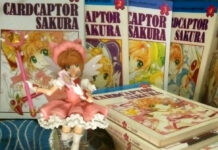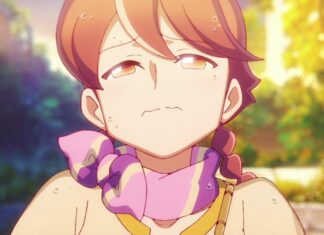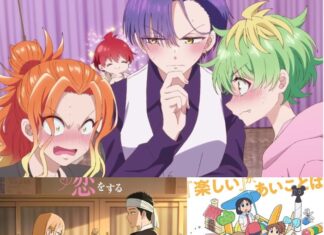The Pretty Cure Formula
In the present day, this lineage of toy company sponsorship media mix model has been taken to a much more sophisticated level by the Pretty Cure franchise. Pretty Cure is produced from the convergence of interests of the animation studio Toei Animation, the broadcasting network Asahi Broadcasting Corporation (ABC), and the ad agency Asatsu DK (ADK) which represents the toys and games company Bandai Namco (Hartzheim, 2016); similar to the TV series Ojamajo Doremi and Ashita no Nadja that preceded Pretty Cure in its Sunday morning time slot (Nadja replaced Doremi, then Pretty Cure replaced Nadja). But with its formula of adolescent girls receiving magical powers to transform into warriors to fight evil, the franchise has been able to continuously produce new TV series with a new set of characters, worlds, and conflicts, every year since 2004.
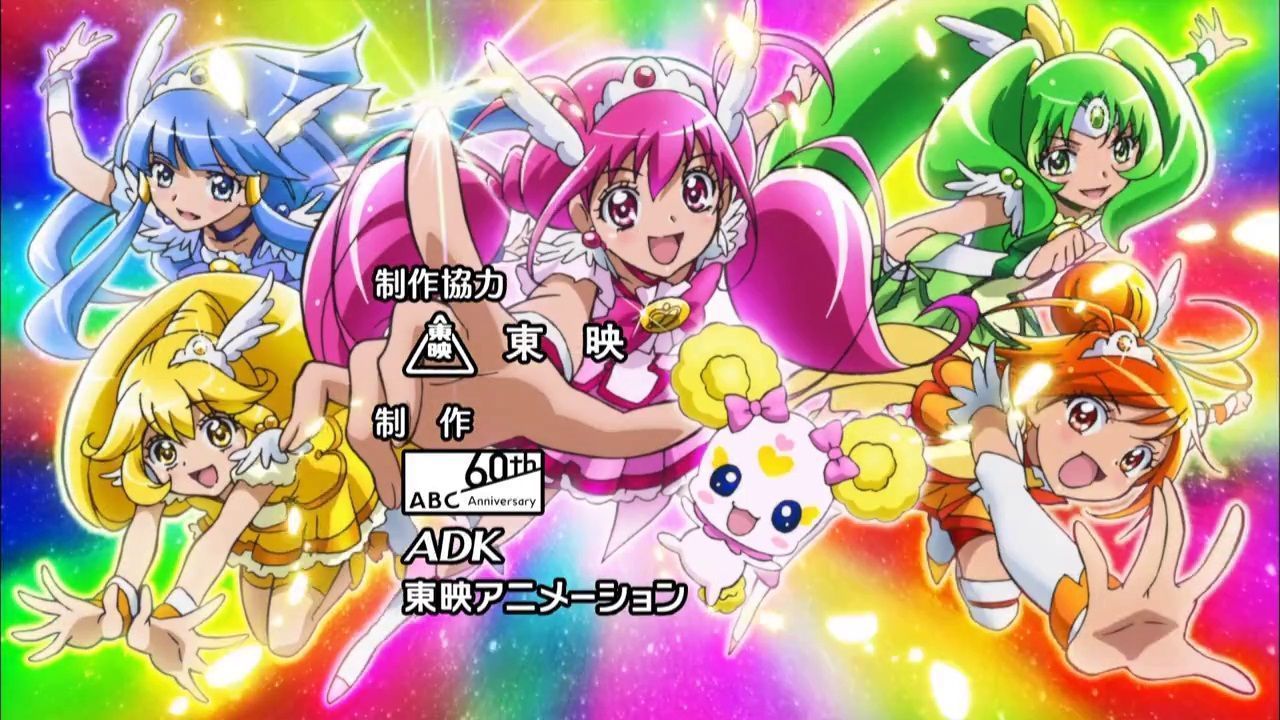
As detailed by Bryan Hikari Hartzheim (2016) from observing the production of the ninth series, Smile Precure!, the production of the Pretty Cure anime involves close collaboration between the toy maker and the anime creative team, for the staff need to coordinate on how to integrate the toys into the plots of individual episodes, or even to advance important plot points in the overarching story. And in turn, the toy maker develops the toys based on the basic ideas for each series proposed by the anime studio, and also responds to feedback from the creative team to make sure that the toys the toy maker designs can be easily represented accurately by the animation.
In fact, frequent viewers of Pretty Cure would certainly be familiar already with patterns of narrative developments and new toy introductions that have become common across its different series. First, the basic transformation item would be released shortly prior to a new series’ debut in February, and then the main team members who transform using that item are introduced one by one in the early episodes. Afterwards, a new item that allows the girls to do a team attack would be introduced around episode 10, with the release of the associated toy timed around it. Around episode 20, an additional team member would join the main girls, who might have a different transformation item, a different item for the attack, or both; which are new toys to be released near the time the new team member joins. Later, around episode 30, they will get a power-up item that allows them to defeat more powerful monsters of the week; of course, with the release of the toy again timed to the item’s introduction.
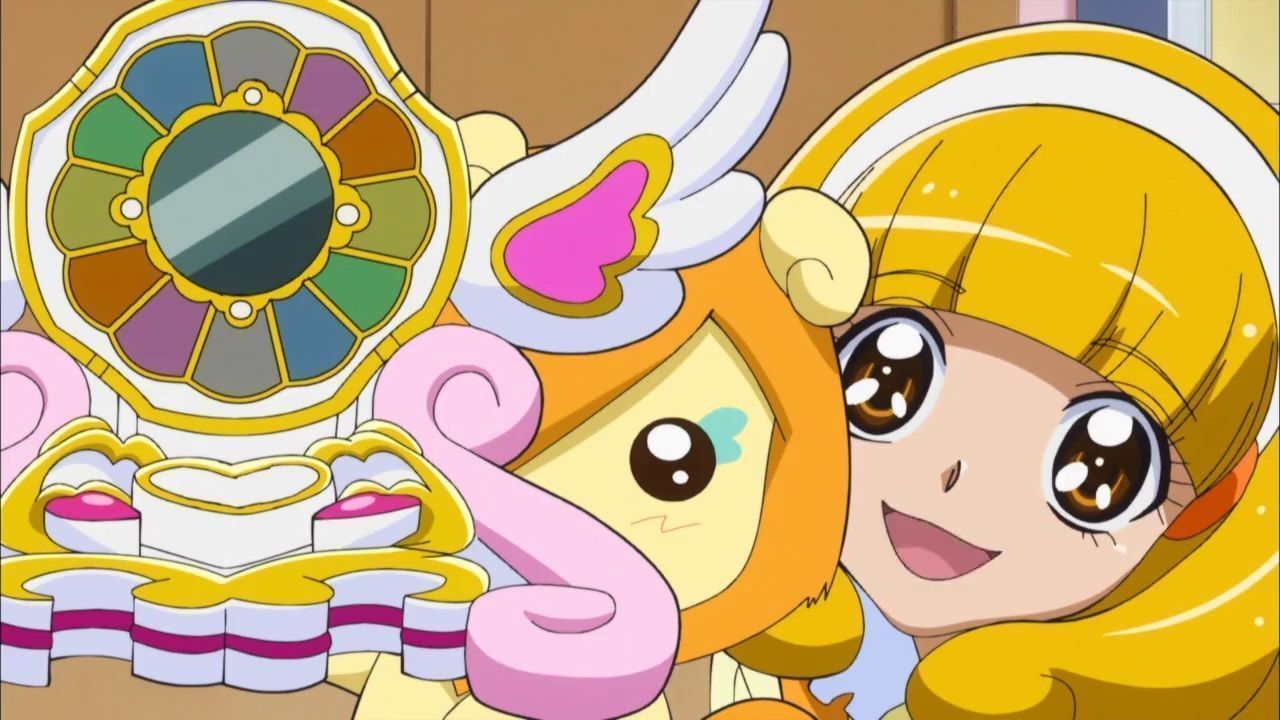
Look at the table below to see how these key items’ introductions follow comparable patterns across the four most recent Pretty Cure series.
| Star Twinkle Precure (2019-2020) | Healin’ Good Precure (2020-2021) | Tropical-Rouge Precure (2021-2022) | Delicious Party Precure (2022-2023) | |
| Standard transformation items | Star Color Pendant and Star Color Pen | Healing Stick and Element Bottle | Tropical Pact and Heart Kuru Ring | Energy Fairies |
| Item for group attack | Twinkle Stick (episode 11) | Miracle Healing Bottle (episode 11) | Heart Quartet Ring (episode 10) | Heart Juicy Mixer (episode 10) |
| New Cure | Cure Cosmo (episode 20-21): transforms with Star Color Pendant and Star Color Pen and attacks with Rainbow Perfume | Cure Earth (episode 19): transforms with Latte and Wind Element Bottle and attacks with Earth Windy Harp | Cure La Mer (episode 17): transforms and attacks with Mermaid Aqua Pact | Cure Finale (episode 18): transforms with Heart Fruits Pendant and attacks with Creamy Fleuret |
| Power-up item | Shiny Twinkle Pen (episode 31) | Healin’ Good Arrow (episode 31) | Tropical Heart Dresser (episode 29) | Party Candle Tact (episode 28) |
Such patterns of power-up items and new characters introduction are not much different from what can be found in tokusatsu hero shows like Super Sentai and Kamen Rider in the present day too (after all, those two shows are also properties of Toei Company that feature Bandai’s toys and air on Sunday mornings on ABC’s network). These patterns make it possible for children to already have the toys to play with when they see the items being used in the TV show. Also observe how Pretty Cure produces video guides on how to play with the narikiri goods like how the main character uses them, similar to what its toku hero counterparts for boys like Kamen Rider also do.
But unlike the toku hero series, the toy lineup of Pretty Cure also includes toys that simulate acts of care and nurturing. This is illustrated in Hartzheim’s paper (2016: 1070-1071) with the doll of the Smile Precure!‘s fairy mascot Candy, which has fuzzy ear parts that can be fashioned like hair into various styles, and can also be accessorized with further toy items. Of course, the anime also incorporates this playability by depicting moments where the girls style Candy’s ears. It is reasonable to say that since Pretty Cure has toys that encourage this kind of play while the toys of toku series for boys don’t, this demonstrates that there is still a gender binary at play where toys for girls emphasize traits associated with femininity such as communicating emotion, caring, and nurturing, while the possession of similar traits is not expected from boys and the toys made for them (Maas, 2019).
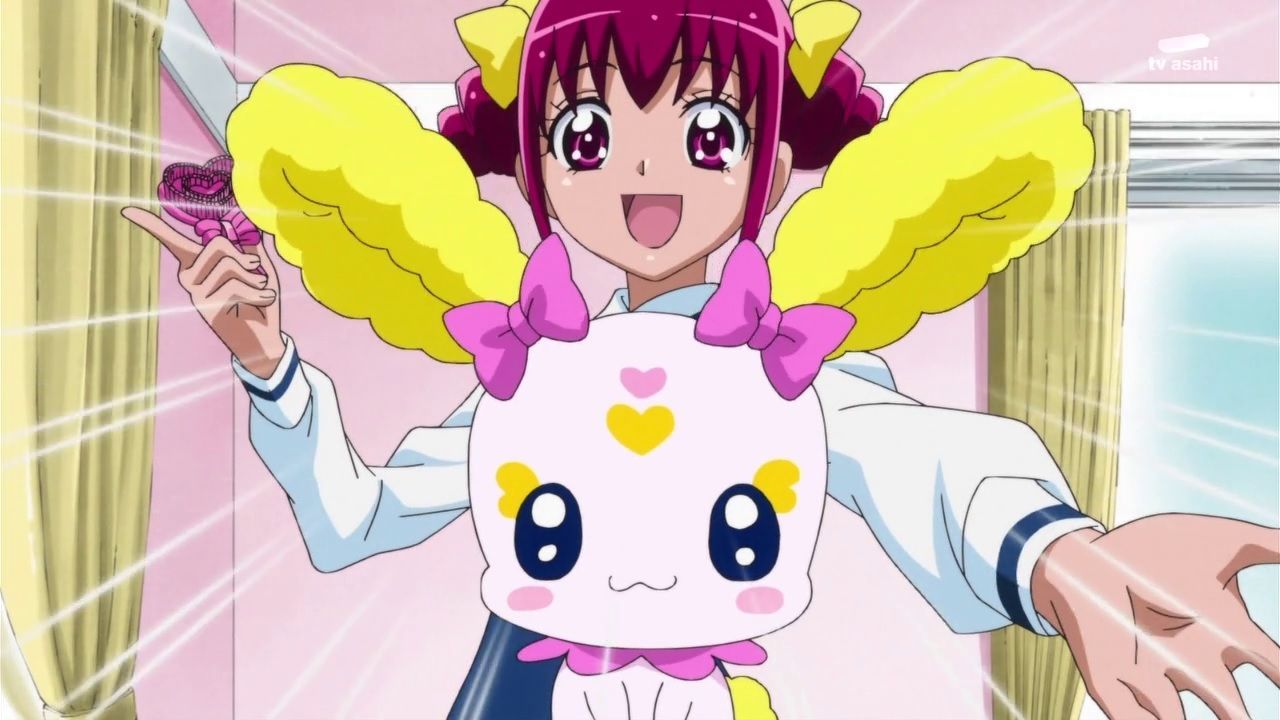
As said in the previous part, the anime media mix offers an environment of media experiences beyond just what can be seen on screen. With the toy company sponsorship model of the magical girl media mix, the tight integration between toys and the anime narrative allows for a tactile dimension to experiencing the anime world through interaction with physical goods that parallels the introduction and use of corresponding items in the anime’s story.
Database Consumption
“Magical Girl” as Database Element
You can see that the tightly-coordinated integration between narikiri toys and narrative could not be observed in series like Magical Girl Lyrical Nanoha or Puella Magi Madoka Magica. There weren’t any toys of transformation or power-up items whose release are timed to key plot points in the story. Even when replicas of their transformation items did get made, they came much later after the show has finished their broadcasts, and their playability is different when compared to, say, what Pretty Cure toys can do. When it comes to goods, arguably replicas of the characters such as figurines are more prominent in these series than goods to be the characters. Such differences should be enough to hint that they have different media mix models with different target consumers and different expected media experiences to offer.
Let’s go deeper about characters with Lyrical Nanoha. It is important to remember that the main character Nanoha Takamachi was originally a supporting character from an adult romance game called Triangle Heart 3 ~Sweet Songs Forever~; specifically, she is the younger sister in the family of the game’s main character. She is cast as a magical girl for a mini scenario in Lyrical Toy Box, a fan disc (additional contents) released after the main game, and then this idea was developed further into a TV series of its own that aired in 2004. And somehow, it’s such a hit! It not only lead to sequel TV series, but also video games, various spin-off and AU manga, and theatrical film series, and it ended up being more well-known than the game the character originated from. Even the animation studio Seven Arcs which produces the anime series proudly promotes itself in its company profile as the company that makes the Lyrical Nanoha series (Seven Arcs, 2019), indicating the importance of the series’ success for the studio and its identity.

But the key here is that when we consider Nanoha’s origin as a “little-sister” or “imouto” type supporting character from an adult game, we can begin to think of how in the otaku-oriented media environment, “magical girl” is actually treated similarly like “maid”, “miko“, “imouto“, etc.; they’re database elements. This is a concept that comes from Hiroki Azuma’s theorisation of a postmodern consumption of media as database consumption, notably observable among otaku fans of anime, manga, video games, and light novels. To keep it simple, in this model, fans break down works into elements that can trigger affective response (moe) and register them into a collective aggregate termed as “database” (Azuma, 2009 [2001]: 42-47). These elements can be visual aspects of character design, characterisation, patterned voices, or even story patterns, that can be mixed and recombined to create new works that provide access to consume the database of elements that trigger moe (ibid.).
Thus, we can think of the character Nanoha in this term to be consumed as a combination of database elements “imouto” and “magical girl”, that proved to be effective in triggering moe among fans. And she isn’t the only instance of a character produced from remixing a character from non-magical girl work with the “magical girl” element. Nurse Witch Komugi and Pretty Sammy can be seen as earlier examples—though in those cases, their characters originate from other anime series rather than from games—, while after Nanoha, the Fate franchise did something similar with the Prisma Illya series. Prisma Illya and Pretty Sammy are even similar to Nanoha in mixing the “imouto” and “magical girl” elements, while Komugi mixes the “magical girl” element with the “nurse” element (the character is a nurse in The SoulTaker anime where she comes from).
Subversion or Remixing of Database Elements?
Going further with the remixing of database elements, if Nanoha repurposed an adult romance game side character into a “magical girl”, there have also been adult games or erotic manga with “magical girl” as their heroines, like Mahou Shoujo Ai from 2001, for example. The game and its OVA adaptation feature graphic sexual violence from demonic invaders towards the titular transforming magical warrior girl (whose design and name parodies Corrector Ai from Corrector Yui). Such work may seem like a perverse idea for a “magical girl” story, but those familiar enough with adult games and erotic manga would perhaps better recognize it as a “girl with supernatural powers fights to protect the world from horny creatures from another world” kind of story element that can be found in various works in those media forms. But where Mahou Shoujo Ai has a “magical girl” as its heroine, in other stories of this type, the heroine might be a ninja (like in La Blue Girl), or perhaps miko, or … . Anyway, I think that makes it clear enough what I mean when I say “magical girl” is like “maid” or “miko” as a database element.
With that in mind, we might be able to reframe discussions surrounding “dark” magical girl works for older audiences that are said to have risen since the appearance of Madoka Magica in 2011 by thinking of them as remixes of database elements as well. Maybe it can make more sense to think of Magical Girl Raising Project as a remix of the “magical girl” element with a survival-type (sabaibu-kei) story element, for example, or of Magical Girl Spec Ops Asuka as a remix of “magical girl” element with “military” elements. For outsiders not familiar with enjoying database consumption, these remixes may appear unusual, shocking, “subversive”, “deconstructive“, or whatever; but they actually just par for the course in database consumption.

While the main character of Madoka Magica did not originate from an adult game or pre-existing anime series like Nanoha and her compatriots, it is still relevant to be discussed within this lineage. The series pedigree is steeped in otaku media from the members of the core creative team, Magica Quartet. In a number of interviews, producer Atsuhiro Iwakami notably highlighted Akiyuki Shinbo’s credit as the director of the first season of Lyrical Nanoha (Megami Magazine, 2010: 115; Manry, 2011). Scriptwriter Gen Urobuchi has worked as the scenario writer for visual novel company Nitroplus and is also known as the writer of Fate/Zero novels (Nitroplus, 2007). Character designer Ume Aoki is the creator of the manga Hidamari Sketch which is serialized in a magazine specializing in four-panel manga with moe aesthetics (Ito, 2009) and has also done visual novel illustrations.
But more importantly, let’s examine the range of media created in the Madoka Magica franchise. Since the beginning, the franchise has included numerous manga featuring anime characters in different timelines or unique characters who don’t appear in the anime series. That is also the case for the various games in the franchise, especially the Magia Record smartphone game (which also has its own anime adaptation!) that features an abundance of magical girl characters that players can obtain through gacha mechanic. This arguably de-emphasizes the consumption of a single unified and definitive narrative. Instead, it emphasizes the consumption of a myriad of characters constructed from various combinations of database elements across a variety of works, akin to what Azuma (2009 [2001]: 48) has described regarding database consumption.

Thus, while the toy-centred media mix produces a range of media that focuses on enabling someone to play being a character, database consumption instead drives media mixes that support the consumption of character database elements that can be accessed through the combinations and remixing of those elements across various works. And “magical girl” is but one of such database elements that can be mixed with other elements to trigger moe.
To be concluded on page 3


